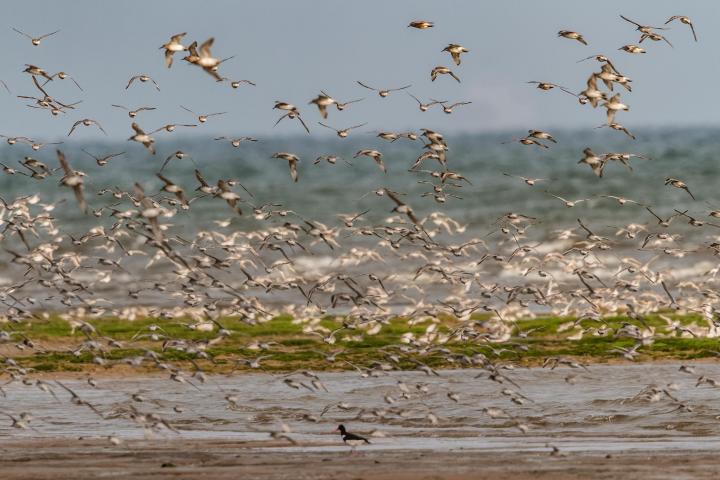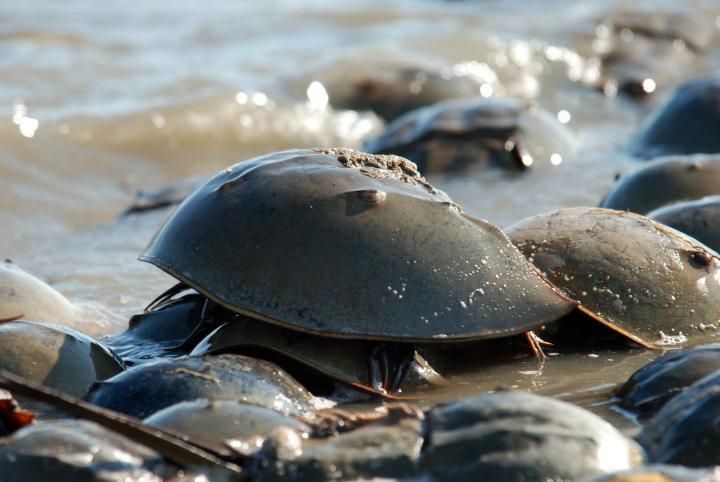Although many birds (and humans!) winter in warmer climates, the bird that should win the most “frequent flyer” points is certainly the Red Knot. Discover more about this bird’s truly epic annual migration—and why this once-numerous shorebird is now threatened.
The Epic Journey
Among the largest of the North American shorebirds, the Red Knot makes one of the longest migrations in the world, flying an awesome 9,300 miles from its winter habitat in Tierra del Fuego, South America, to its breeding grounds in the Canadian Arctic and back. This journey takes the shorebird to some of the hottest and coldest regions on Earth.
The Staging Area
During its migration, the Red Knot makes a critical rest stop in the Delaware Bay. They gather in large flocks, now diminished, where they fatten up on horseshoe crab eggs. If you ever have the chance to see this display in person, it’s phenomenal!
Staging areas in New Jersey, Maryland, and the Delaware Bay once attracted thousands upon thousands of birds. They were a great source of wonder and mystery to early ornithologists and observers, leading to lot of speculation about the Red Knot. One myth stated that the birds buried themselves in mud in the fall and emerged in the spring, while another held that the Knot morphed from one species into another.

Credit: Keith Pritchard/Shutterstock
John J. Audubon knew them as a good dinner, as did the Viking Chieftain, Canute, who regarded the Knot as his favorite meal. His Viking descendants from Sweden eventually settled in the Delaware Bay area.
Threatened Birds
Over the past 30 years, the population of Red Knots has declined from 95,000 to only 4,000, and the bird is now listed as federally threatened. Why? It has to do with the bird’s crucial food source: the horseshoe crab.
Each spring, horseshoe crabs come ashore in areas like the Delaware Bay to lay nearly 4,000 eggs per square yard. Long ago, the number of eggs reached 500,000 per square yard, which assured a major supply of fat for the long flight of the Knots to their Arctic breeding grounds.

These days, the horseshoe crab is harvested for its unique blood, which contains properties that make it highly valuable for medical research. The horseshoe crabs are “milked” for their blood, after which they are released, but many are unable to spawn and eventually die. The consequences for the horseshoe crab—and thus, the Red Knot—are severe.
The relationships between the crabs, humans, medicine, and geography intertwine to create a dramatic story for the Red Knot—and no one can say for sure how it will end yet.
For more information on the Red Knot and its close relationship to the horseshoe crab, read The Narrow Edge by Deborah Cramer.
Learn about how migrating birds navigate the night sky!
Comments